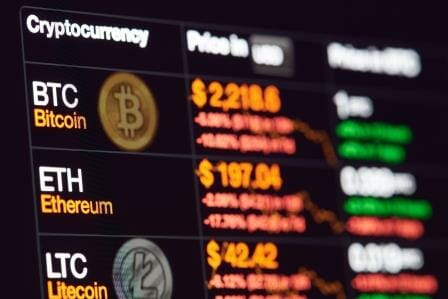Bitcoin’s price went up from USD 7,700 to USD 9,500 in just 24 hours. Three key factors led to such a big increase in the short term.
According to data from CoinMarketCap, the price of Bitcoin (BTC) rose from USD 7,700 to USD 9,500 overnight, achieving an increase of about 23%.
Bitcoin’s recent rise is due to three main factors: a record-high spot exchange volume, a rise above all-time resistance levels, and a marked increase in institutional demand.
Spot Exchanges Bring Bitcoin to USD 9,500
In the area of cryptocurrencies, the term spot exchange refers to a platform that facilitates crypto-fiat trading. For instance, users can trade Bitcoin with USD or stablecoins like Tether (USDT) without leverage, through Binance and Coinbase.
Leverage and borrowed capital do not help inflate the trading volumes coming from spot exchanges. Typically, spot volumes demonstrate genuine retail demand and often increase during the accumulation phase.
Bitcoin’s recent boom differs from previous rises in that it was led primarily by spot volumes. Binance and Coinbase posted record daily volumes, according to Binance CEO Changpeng Zhao.
Coinbase was unable to manage users’ activity for a while since there was too high a demand from them for Bitcoin.
Meanwhile, the open interest of Bitcoin futures on BitMEX remained below USD 500 million. Bitcoin’s open interest on BitMEX, which refers to the total number of short and long contracts opened in the market, held above USD 1 billion last February.
There was a relatively low trading volume of Bitcoin on futures exchanges and a dominance of spot platforms, which indicates that the rise from USD 7,700 to USD 9,500 was organic.
BTC All-Time Highs are Easily Exceeded
Cryptocurrency trader Benjamin Blunts said that Bitcoin’s price surpassed all major all-time resistance highs when it exceeded USD 8,000.
The 100-day and 200-day daily moving averages (DMA) and the 0.618 Fibonacci retracement level were simultaneously exceeded.
When Bitcoin breaks through major areas of resistance without falling back, it indicates that a stronger upward move is waiting for it. For this reason, when BTC first reached USD 8,000, it quickly rose to USD 9,500.
Institutional Demand Acts as a Safety Net
Compared to the first quarter of 2020, the key narrative around Bitcoin was the accumulation of Bitcoin by institutional investors.
According to Grayscale’s quarterly report, which operates the Grayscale Bitcoin Trust, 88% of investments came from institutions. During the same period, the assets under management (AUM) of the Grayscale Bitcoin Trust reached USD 3 billion, according to its CEO, Barry Silbert.
The investment firm said that 88% of this quarter’s inflows came from institutional investors, the vast majority of which were hedge funds.
Institutions consistently invested in Bitcoin throughout the first quarter, evidenced by the gradual increase in capital inflow into Grayscale’s institutional products since January 2020.
The increase in spot volume, the breakdown of key resistance levels, and the accumulation by institutions are due to a significant increase in the demand for organic retail sales. All of this created a perfect storm for Bitcoin before the halving, thus boosting it above USD 9,000.
By Alexander Salazar











